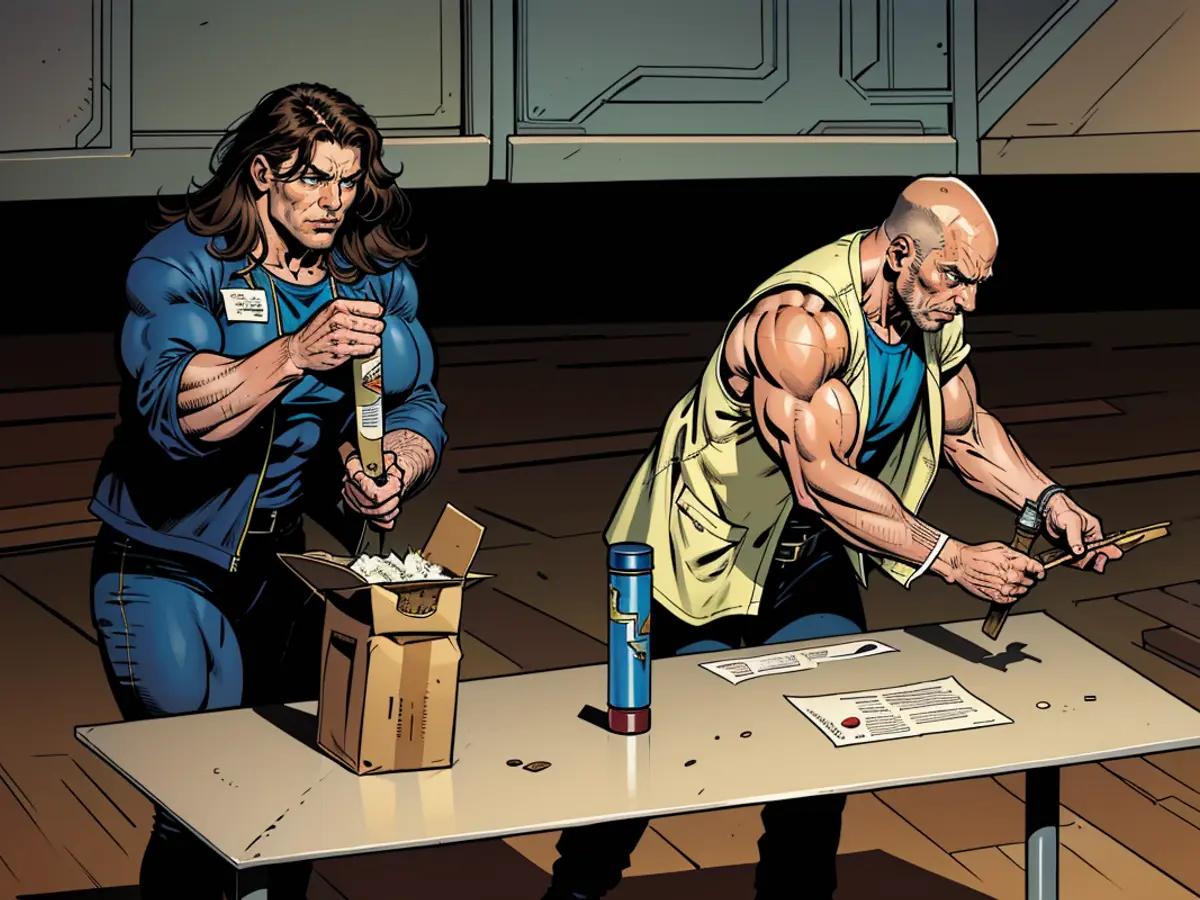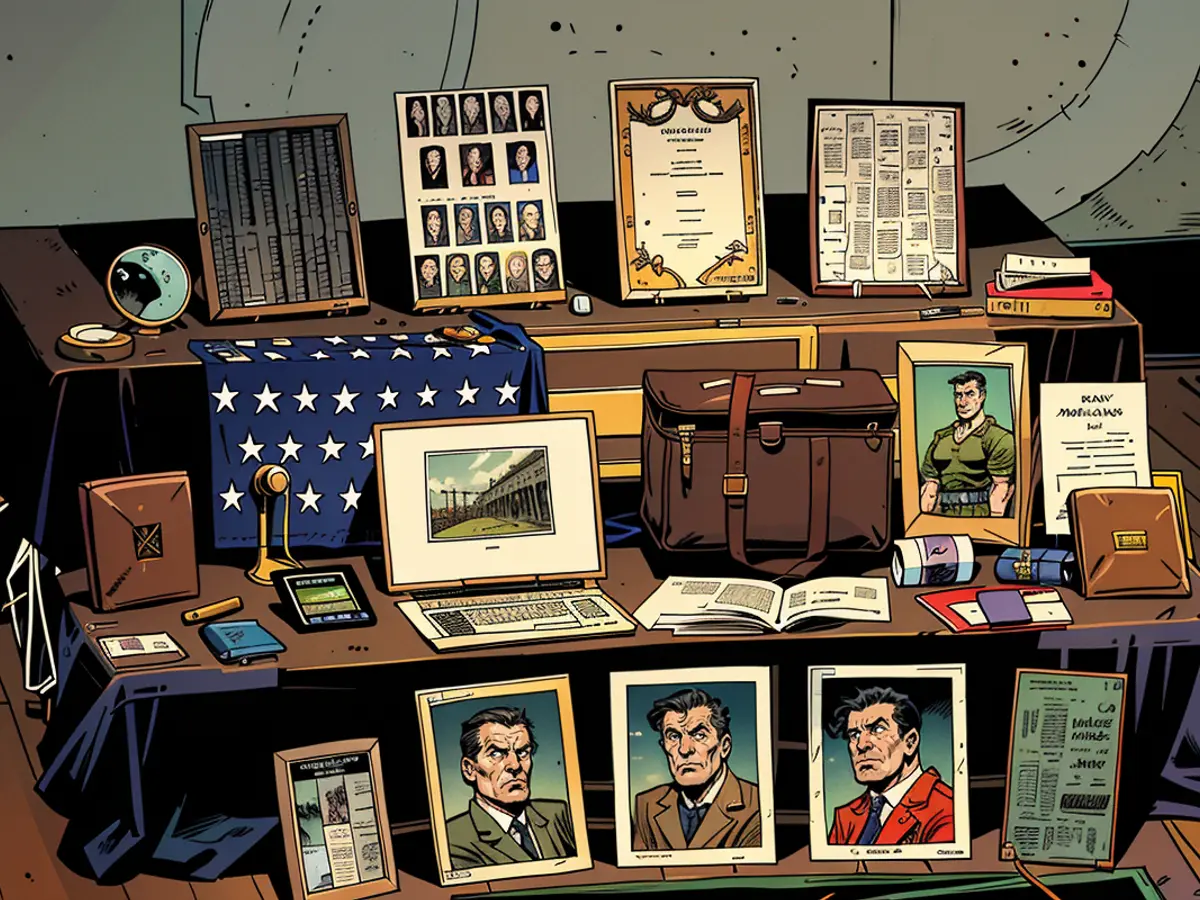Century-old relics enclosed within a time capsule, situated in Kansas City, are unveiled at the World War I Museum.
In 1924, a coalition of historians and museum curators collaborated to embed a time capsule within the Liberty Memorial, set to be unearthed a century later. The capsule commemorated the triumph in World War I and offered a peek into life during that era.
The Liberty Memorial Association, a collective of influential Kansas City figures, spearheaded the construction of a memorial to celebrate those who served in World War I.
During the memorial's construction, a ceremonial stone-laying event gathered over 100,000 spectators, with airplanes soaring overhead, doves being released, and patriotic music filling the air.
The time capsule was encased within the interior of the Liberty Memorial Tower's limestone concrete. After a century, museum staff arranged a ceremony to reveal its contents, which had been retrieved in the summer.
Delivering remarks during the event, the museum's president and CEO, Matthew Naylor, expressed his surprise at being there a century later to open the capsule.
The time capsule's retrieval was challenging
Extracting the capsule was no easy task for museum curators and staff, according to Christopher Warren, the chief curator at the National WWI Museum and Memorial.
Workers had to drill into the Liberty Memorial Tower's wall to retrieve the capsule. Furthermore, the capsule was discovered in an unexpected location, necessitating the museum's facility engineer to drill through 18 inches of limestone and concrete to find it.
Another difficulty arose during the retrieval process. The curation staff were aware of the presence of highly flammable nitrate film from the 1920s within the capsule.
At the beginning of the ceremony, Naylor revealed the museum's inventory of the capsule contents, confirming the film's nitrate composition.
The fear was that, if not properly stored, the film would ignite upon exposure to oxygen. The museum enlisted the assistance of the Kansas City Police Department's bomb and arson unit to safely open the capsule without causing an explosion.
The capsule was opened before the unveiling ceremony on Wednesday to evaluate the condition of its contents. Fortunately, the objects were well-preserved and unaffected by mold or water damage.
Century-old treasures revealed
Museum staff spent eight hours painstakingly prying open the interior packages using tweezers and small razor blades to protect the artifacts and their packaging.
Warren revealed that the capsule contained newspapers, a Constitution copy, a Bible, and a declaration of war from April 1917.
Three artifacts remained sealed and were unveiled live at the ceremony by museum curators. The audience included students from local schools.
The first displayed object was a tube of seeds, symbolizing the Kansas City agricultural community.
A tube of congratulatory letters followed, consisting of messages from Allied war commanders attending the 1921 groundbreaking for the Liberty Memorial. Another letter was penned by President Calvin Coolidge.
The final object was a printing plate from the Kansas City Star, dated to November 1, 1921. The headline detailed a three-mile parade attended by 60,000 people.
Unique signatures adorned the capsule
What intrigued Warren and museum staff was the presence of engravings depicting various signatures on the interior of the copper box. The museum undertook extensive research to identify the signees but was unable to do so.
However, they concluded that the signatures belonged to individuals involved in constructing the time capsule, rather than just the committee responsible for curating it.
“This suggests that it wasn’t just the committee who chose the objects for the time capsule,” Warren said. “It also involved construction workers and individuals who were directly part of putting the time capsule together.”
After the successful retrieval of the time capsule, museum staff discussed the potential significance of the mysterious signatures on its interior.
The presence of these signatures indicated that the time capsule's creation was a collaborative effort involving not just historians and museum curators, but also construction workers and others directly involved in the process.









